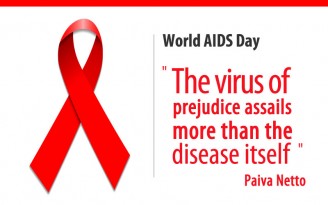
Microcephaly: Neurologist explains the causes, symptoms, and treatment
The condition may be linked to Zika outbreak
Karine Salles
Saturday | March 12, 2016 | 10:29 AM | Last update: September 22, 2016, 4:07 PM (Brasilia time)
With the rapid spreading of the Zika virus across the Americas, microcephaly has recently become the subject of investigation of the international community, mainly with regard to pregnant women. Even though the effects of the virus on the fetus are still being analyzed, the Brazilian Health Ministry established a link to the increase in cases of microcephaly in babies whose mothers had been infected with the virus.
Based on preliminary studies, Brazilian authorities pointed out that there is a greater risk of microcephaly and malformation of the fetus with infection from the virus in the first trimester of the pregnancy. Health authorities and other agencies, with the support of the Pan American Health Organization (PAHO), are investigating the cause, risk factors, and its consequences. To clarify the main doubts about the condition, the Good Wil Portal talked to Dr. Tânia Saad, a pediatric neurologist from the Fernandes Figueira National Institute of Women’s, Children’s, and Teenagers’ Health of the Oswaldo Cruz Foundation (FIOCRUZ), from Brazil:

THE CONDITION
Microcephaly is a condition where a baby is born with a small head, in other words, a disproportion in relation to the baby’s weight and size. Dr. Tânia says that “to confirm microcephaly there has to be a disproportion between the infant’s face and its skull, since the bones that close the head are smaller than the size of the face.”
CAUSES
Microcephaly is not a new condition, but it was always rare. Congenital malformation is generally associated with a series of factors, such as the use of chemical substances during pregnancy, like drugs, radioactive contamination, or infection by biological agents, like bacteria and viruses. “Rubella, for example, which is a well-known disease and for which there is a vaccine, can also alter the size of the brain and cause alterations in the heart, liver, and intestine,” she warned.
When the baby does not receive sufficient blood, it can be diagnosed with intrauterine growth restriction. “This occurs due to abnormalities in the placenta or to the mother’s high blood pressure, which prevents the baby from receiving the necessary nutrients ,” pointed out Dr. Tânia Saad.
CONSEQUENCES
Around 90% of the cases of microcephaly are associated with cognitive delays. The type and severity of the consequences vary according to each case. “This is a child who is going to experience neurological complications, that is, motor control issues due to intracranial calcifications.”
Other complications usually occur, such as seizures, headaches, joint pain, impaired vision, hearing loss, and intestinal problems. “The child may have learning disabilities, delays in motor and speech skills, and difficulty moving from place to place,” she said.

TREATMENT
Treatment that starts in the early years improves the development and quality of life of the infant, but there is no specific treatment. It is carried out in accordance with the manifestations of the baby, whether mild or severe. Regardless of the degree of disability, the treatment includes sessions of speech therapy, physical therapy, and occupational therapy to stimulate the child, reduce mental retardation, and the delay in its development and growth.
ATTENTION
The lack of knowledge, the outbreak of the disease, and its link to Zika virus have raised fear and concern among many families. “It’s important that parents, albeit minimally, are prepared for the arrival of a baby that’s going to have so many needs.” Like any other disease with or without impairments, the Good Will Portal emphasizes that love and attention towards the child are essential for a better quality of life.


